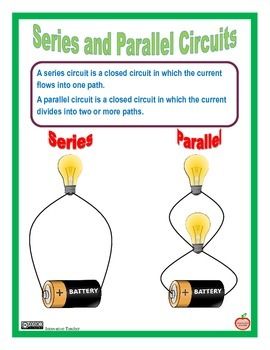Divine Series And Parallel Circuit Diagram

The first three lamps b1 b2 and b3 are connected in parallel while the switches s1 s2 and s3 are wired in series accordingly.
Series and parallel circuit diagram. Figure 1 shows a circuit diagram of a very simple three resistor series parallel circuit. Resistors r2 and r3 are seen to be connected in parallel and resistor r1 is in series with the parallel combinations of r2 and r3. B7 b8 b9 and b10 are in series with each other when they are parallel to the first three bulbs b1 b2 and b3 while the switches s5 and s6 are connected parallel to the bulb b10.
Again many of you probably know this and if so i implore you read on for a review. Parallel circuits are useful if you want components to continue to work even if one component has failed. There are two basic ways in which to connect more than two circuit components.
But there may be some newbies reading this so i m going to quickly. First an example of a series circuit. The two simplest of these are called series and parallel and occur frequently.
That s the key difference between series and parallel. Components of an electrical circuit or electronic circuit can be connected in series parallel or series parallel. Components connected in series are connected along a single conductive path so the same current flows through all of the components but voltage is dropped lost across each of the resistances.
Series and parallel circuits. In electrical and electronics engineering it is very important to know the differences between series and parallel circuits. They are the two most basic forms of electrical circuit and the other one being the series parallel circuit which is the combination of both can be understood by applying the same rules.
And unlike a series circuit the lamps stay bright if you add more lamps in parallel. Series vs parallel circuits. Series parallel circuits current 1 draw a circuit diagram to show how you could use a switch to turn a battery powered motor and a lamp on and off.













